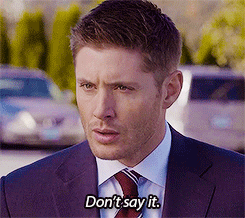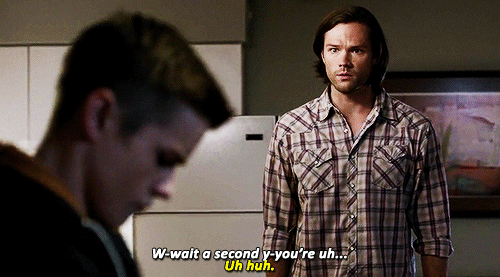What do comic book gorillas, gays, and the GOP have in common? No, it's not hairy knuckles! This week we explore how the three topics are interconnected.
Over the decades, comics have been known to have their quirks: alien visitors, radioactive powers, psychic phenomena—all have a place in the proud history of graphic literature. However, from time to time, a theme pops up that makes you go…huh?!
Today, we’ll be looking at one such head-scratching trend—gorillas—and how they might impact the queer community. Yes, you heard correctly: GORILLAS and GAYS. Specifically, evolved gorillas. They come in all shapes and sizes—from magically mind-switched to scientifically enhanced, comics seem to have a passion for quirky gorilla characters. Since the 1940s (shortly after the advent of the superhero genre) to the present day, there have been ape characters that have swung unto the pages of major and minor publishers.
One of the first characters to debut in 1940 (who received a revival in DC comics in the early 2010s) was Congorilla. You know the age old story: white man moves to the Congo, befriends local witch doctor, becomes mortally wounded, and receives and enchanted ring that can switch his mind into the body of a golden gorilla. So passé.
Marvel debuted a very similar hunter-themed character in 1954 with Gorilla-Man where a famous gamesman tracked down a fabled ape that was purported to make anyone who killed it immortal (by trapping the hunter inside its undying body…really? Who would opt to do this?). This character also received renewed interest in the early 2000s with the revamping of Marvel’s Agents of Atlas series.
![]()
![]()
In the mid-to-late fifties, Marvel and DC both put out counterpoints to their previous hairy and heroic characters with the introduction of another Gorilla-Man (Marvel) and the far-more-famous Flash villain Gorilla Grodd. This iteration of Gorilla-Man was a former surgeon who had previously grafted ape organs into humans until his simian subjects turned on him and (somehow?) transplanted his head onto a gorilla body. It probably isn’t necessary to explain why he would become a C-list villain.
Gorilla Grodd, on the other hand, outshone all of his previous compatriots without having to resort to poo-slinging. The most current origin story (after DC’s numerous reboots) has a UFO crashing near a troupe of gorillas in Africa where the alien pilot then imbues the apes with great intelligence (and in Grodd’s case, telepathy and telekinesis). This development takes a leap forward: not only is Grodd the first actual gorilla who is evolved (instead of a human residing within it), but he is the first ape to possess super-human abilities other than longevity, making Grodd a formidable adversary.
![]()
![]()
The 60s saw the Big Two companies spin out another pair of gorilla characters: a third Gorilla-Man (courtesy of Marvel), and the quirky, machine-gun-toting, beret-wearing Monsieur Mallah. This iteration of Gorilla-Man was a psychedelic mash-up of Dr. Jekyll and Flash Gordon (but those were the 60s, n’est-ce pas?) who has completely faded into obscurity. Mallah is still around…more on him later.
A newer take on the theme happened in 1984 (also the last major time the Big Two would put out a new gorilla-type character) when Superman’s first villain, the Ultra-Humanite, transferred his mind into the body of an albino ape (because albino was the new black, apparently).
![]()
![]()
The 1990s to the modern era has been dominated by the smaller companies, each seeking to stake out their own unique knuckle-dragger. Spawn introduced Cy-Gor—a friend of Al Simmons whose mind was transferred into a technologically advanced gorilla—in 1995, while Tom Strong brought along the regular cast member King Solomon—a gorilla with a cockney accent who lives and works with the Strong family (his origin has yet to be revealed).
![]()
![]()
Finally, 2008 saw the creation of a new simian duo with an eerie commonality: Nazis! Hellboy faces off against the Kreigsaffen—a pair of gorillas that were technologically modified by Nazi scientists—while the similar Savage Dragon went toe-to-toe with Brainiape—an enhanced ape with the brain of (you guessed it) Hitler himself!
![]()
![]()
The love of all things ape even saw two industry events from the Big Two (seemingly missing their simians): JLApe (DC, 1999) the specifically gorilla-focused event where the apes from Gorilla City (Grodd’s home) invent tech that can turn any human into an ape, and Marvel Apes (Marvel, 2008), the follow up alternate reality event that was supposed to be a popular as Marvel Zombies set on a world where all our favorite characters were either monkeys or apes. Yeah…it actually happened.
![]()
![]()
Now the reasoning behind such a weird trend is elusive and myriad: some sources say that publishers were influenced by popular culture and, while attempting to draw in readers, would include parallels to hot media. There may be some credence to this opinion, as there has been at least one King Kong, Tarzan, or Planet of the Apes film every decade since 1930.
Another popular opinion is that comic book publishers (especially in the nascence of the genre) would employ odd-ball tactics to attract new readers. An interview from 1999 with former-executive VP of DC, Irwin Donenfeld, revealed that he had noticed a marketing trend: readers would be more likely of picking up a comic if there was a gorilla on the cover. He stated in this interview that the clamor from his various titles was so great, that he had to institute a rule across all of his titles that only one-gorilla could be seen per month.
![]()
![]()
Now back to M. Mallah. The character of Mallah (often paired with The Brain) was introduced in the mid-60s into the risk-taking title Doom Patrol. The scientist-who-would-become-Brain experimented on the gorilla-who-would-become-Mallah to raise his intellect to genius levels. Brain then trained this ape for over a decade to become his personal servant/assistant/partner-in-crime. Several decades later in 1990, under the hand of Grant Morrison, the story took an interesting turn: romance. Brain, now finding himself in a robot body (instead of his go-to brain-jar), professes his love for his companion, who reciprocates. The two admit their feelings and become one of the first queer super-villain couples.
![]()
This is all well and good, until we begin to look at the implications of such a pairing for the queer community. Those of us under the queer umbrella (or anyone who keeps abreast on politics) are familiar with a refrain that the ultra-conservatives and religious right like to throw around regarding gay marriage: allow the gays to marry and, pretty soon, people will be attempting to marry their pets. Now let’s look back at Mallah.
Unlike many of the others on this ape-list, Mallah is a genuine, biological gorilla—not a human who is turned into/melded with one, not a human mind transferred into a gorilla body. He was also the pet of the Brain. When Mallah was elevated, he had to be trained for over a decade to act and respond in human fashion since his brain was that of a gorilla (albeit a genius gorilla). Do we see the problem? In the most literal sense, Brain and Mallah are the religious right’s worst nightmare come true (or dream, depending on how you look at it).
Although I earnestly hope and pray that the religio-political wingnuts don’t read comics, I’m sure that Mallah will come to the attention of some crazed fanatic sooner or later (if he hasn’t already). When that day happens, this coupling becomes another bullet in their chamber—“evidence” to back up their crazed ideas of “gay agendas”.
Suddenly, the comic book industry is brain washing (or should that be Brain-washing?) a generation of children to believe that same-sex romance between a person and their pet is perfectly acceptable. Cue the end of society as we know it: natural disasters, orgies in the street, fire from heaven, a remake of Footloose, etc.
Of course, no one put up a stink when Supergirl had a romantic relationship with her super-horse Comet, but then again, she is straight (and every girl wants a pony, right? Just not every girl wants a pony…) and was ignorant at the time that the person she was kissing used to be an equine. Because that’s better…
And, just for the record, it seems next to impossible that Mallah and Brain have ever had sex. The first time that they admitted their love (when Brain was in the robot body), the building exploded immediately after. For most of his subsequent appearances, Brain went back to living in a jar. Of course, there are ways that things that could have happened if writers chose to be creative, but it appears that Mallah and Brain have a deep romantic love (it would have to be).
![]()
At the end of the day, I’m glad to have queer representation in comics. I believe that every child (and adult for that matter) needs to see him/herself reflected in the media around us. But how could we attempt to fix the situation to avoid possible negativity? The solution definitely should not be to brutally kill off the characters like what happened in the Pre-52 event, Salvation Run.
![]()
Since the characters have been revamped in the New 52, Mallah and Brain have only been seen in the presence of other gorillas (namely their previous murderer Grodd, which I have problems with). Since Gorilla City is an entire metropolis of advanced apes, I would be more than happy for Mallah to find another hunky, intelligent ape to build a nest with (yes, gorillas build nests…look it up). That would even be a positive representation because it would reinforce the fact that homosexuality happens in the animal kingdom (which would debunk the other major point of the wingnuts: that being gay is “unnatural” and that all things were made to have only reproductive sexual urges). That is one bit or representation that is lacking in comics.
Even though Mallah and Brain were groundbreakers—not just for being a queer villain couple, but also for defying expectations of ability/disability—it might be better if Mallah laid low for a while in the current political climate. The GOP doesn’t need one more thing to go ape over.
![]()
What are your thoughts? Jump into the conversation, and comment below!






















































































































































